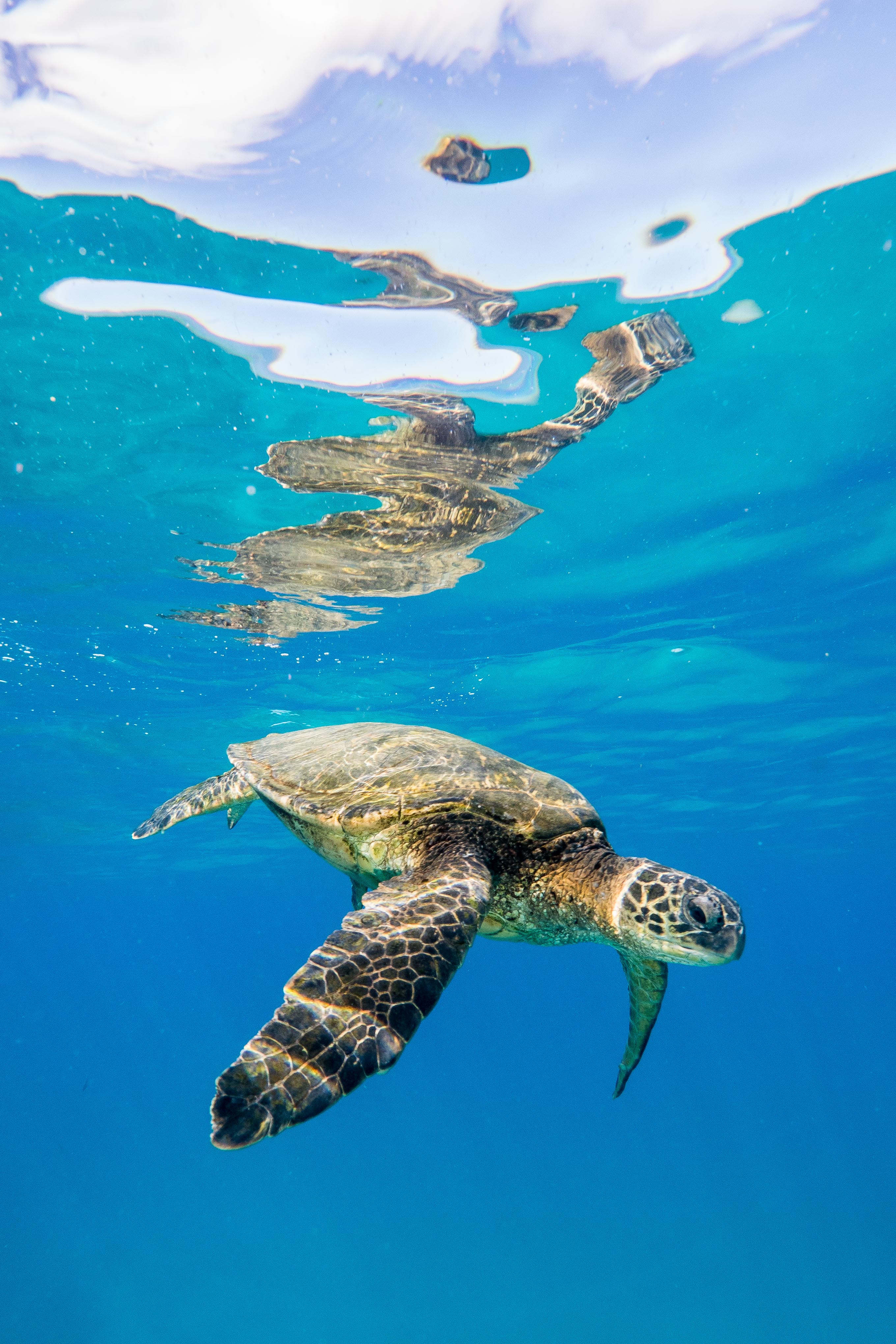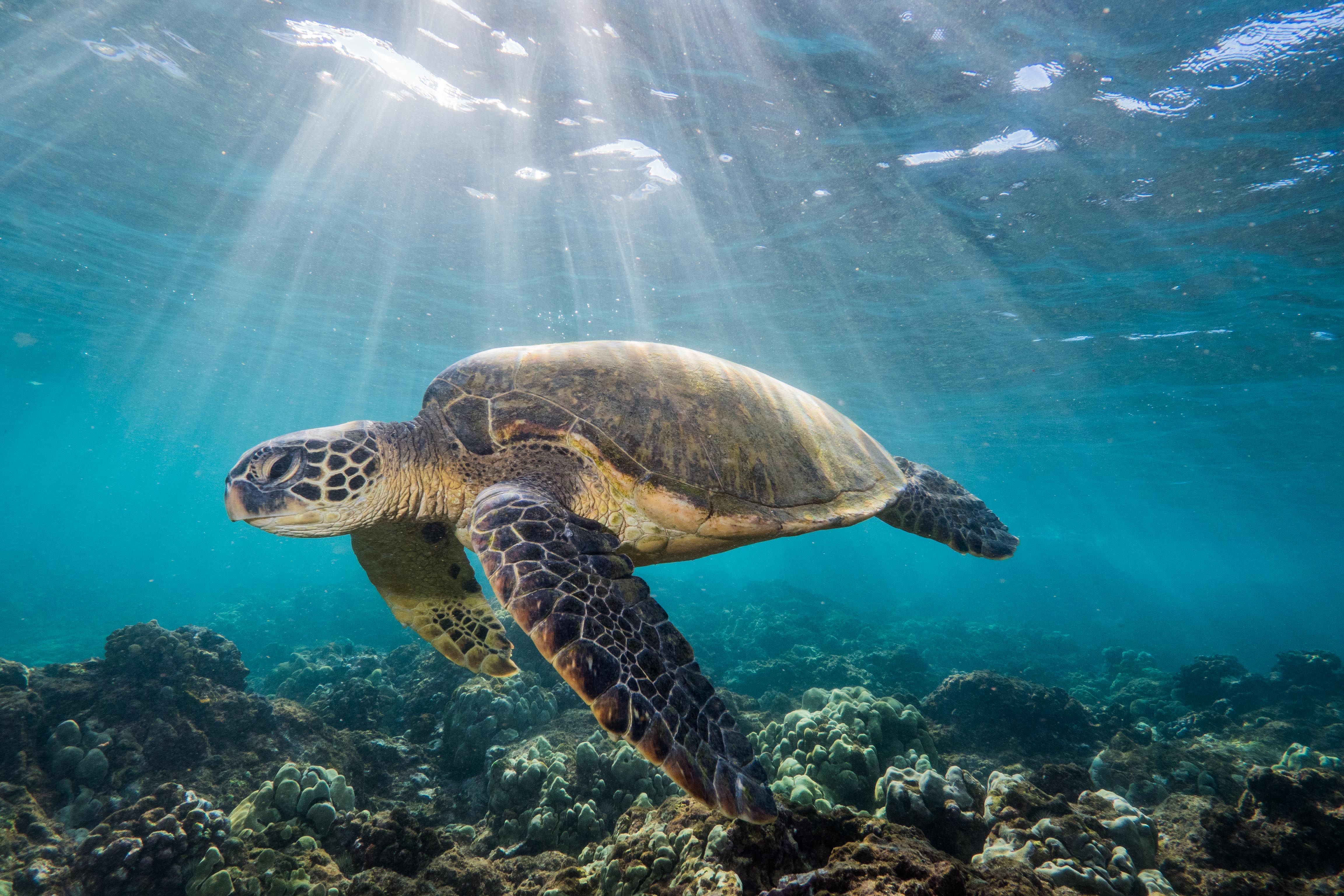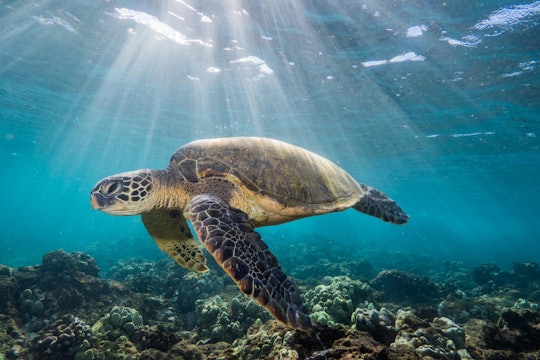The US-Mexico border is making life complicated for green sea turtles
How do you protect animals that move seamlessly between jurisdictions?
The southern border of the United States has been a focus point for American politics for years, and the 2016 presidential race cast a spotlight on the already controversial region. What the pundits and politicians may not have considered is that borders don’t just affect humans—they also impact the lives of animals that live around them.
Take for example, the entrance to San Diego Bay, which is just twelve miles from the border and Tijuana. There, researchers from NOAA have been looking for a different kind of migrant—green sea turtles. The scientists knew that the turtles spend a lot of time in San Diego Bay, but the key to understanding turtle populations is knowing where they breed.

Green sea turtle mothers return to the beach where they were born every time they breed, which is every two to three years. (Over her lifetime, a female green sea turtle lays around 2,000 eggs.) So protecting these beaches is paramount for survival of the turtle population, since urban development near the turtles’ nests can confuse hatchlings. They can mistake lights on buildings for the reflection of the moon and stars on the ocean, often leading them to their deaths.
Researchers in San Diego wanted to know where the green sea turtles lay their eggs, make their nests, and what kind of protections they’re getting where they hatch. The researchers had a few ideas: They guessed it might be Mexico, Hawaii, Costa Rica, or the Galápagos Islands. To track the turtles down, the scientists formed a two-pronged study, starting with satellite trackers. Green sea turtles are ideal for satellite trackers, which don't work underwater, because unlike sharks or fish, they need to come up to breathe. Every time the turtle breaks the surface, the tracker pings its exact location to GPS satellites.
Between 2002 and 2009, 10 females found in San Diego Bay between January and April were outfitted with trackers, in an attempt to catch a female on her way to her nesting beach. Unfortunately, out of the 10, only three left the area for their nesting beaches.
To supplement their data, the researchers compared the genetics of the turtles hanging out around San Diego to turtles living in other locations. They found that 71 percent of San Diego-based turtles likely originated from the Revillagigedo Islands, Mexico; 24 percent were hatched in Michoacán, Mexico; and the rest were split between northwestern Hawaii, Costa Rica, and the Galápagos.
The trackers told a similar story. One turtle migrated directly from San Diego Bay to the Revillagigedo Islands, a trip which took 90 days. She then spent 230 days around the island of Socorro, off Mexico's western coast. Another turtle followed a similar path at first—but then took a sharp left turn to nest at Michoacán.
The final turtle may have nested in a completely new location, the Tres Marias islands—which aren’t known to house a nesting beach for green sea turtles. The last account of green sea turtles there is from 1899, and research access has been limited. Since 1905, the islands have housed a federal prison, which used to be one of the most infamous in Mexico, but later was used as a stepping stone to release. Research on this island’s possible turtle population has yet to be done.
For these turtles, crossing the border means leaving one set of protections and inheriting another. In the United States, the green sea turtle is protected by the Endangered Species Act, and most mortality in US waters comes through fishing and boat strikes.
In Mexico, there are similar legal protections, but they don’t seem to be enforced. Particularly when green sea turtles are foraging off of the Baja Peninsula in Mexico, poaching of eggs and adults is a big concern. In the 1990s, poaching and incidental by-catch—turtles that die through accidental catch by fishermen—meant as many as 30,000 turtles were dying every year. Egg harvesting for food and medicinal purposes has also been a concern for nesting sites, but new laws in Michoacán have helped to increase their breeding populations from under five hundred females in the 1980s to around 2,000 females as of 2009. (There have been inconsistent reports for more recent population estimates). By migrating as adults to San Diego Bay, the green sea turtles may have found an oasis of safety, at least compared to the high mortality rates of the waters off of the Baja Peninsula.

Nor are turtles the only migratory animals for whom the Mexican border is an issue. Monarch butterflies migrate to Mexico from all over the United States to escape cold weather and hibernate. While some of the areas in Mexico where they hibernate are protected, development throughout their range has led to large fluctuations and overall decline of Monarch populations. In the midwestern US, for example, expansion of farmlands has led to the loss of the milkweed fields where the butterflies are born. Monarch butterflies are under consideration for threatened status from the IUCN.
Some of the animals migrating across the southern border are even rarer—a Scientific American article reports on jaguars, who once roamed the southeastern U.S. but now are struggling to push back into Arizona. A border wall, like President Trump is advocating for, could fragment the fledgling population from its larger host in Mexico, preventing growth and limiting possibilities for breeding.
Unlike a wall, which can stop a big cat from walking over the border, the barrier to a sea turtle’s success as a migrant is more abstract—and it occurs in many places that the green sea turtles live. In the Caribbean, green sea turtles can easily pass through territorial waters of many different countries in a short time. Inconsistent protection can threaten even an otherwise strong population.
Luckily for the green sea turtles of San Diego, Mexico just protected the Revillagigedo Islands as a national heritage site and North America’s largest marine protected area. For at least these migrant mothers, the future's looking up.




Hey Tim! I really enjoyed your synthesis on the effect of border walls, particularly the details about the tracking (and the great pictures).
I’d love to hear more about protection measures – what, beyond stopping a border wall, is an option for protecting sea turtles? Would there be work on both sides of the wall needed? How will a wall effect future research? I read an article about butterfly conservation evolving after the wall in The New York Times, and it was interesting to read how it could effect the future conservation efforts.